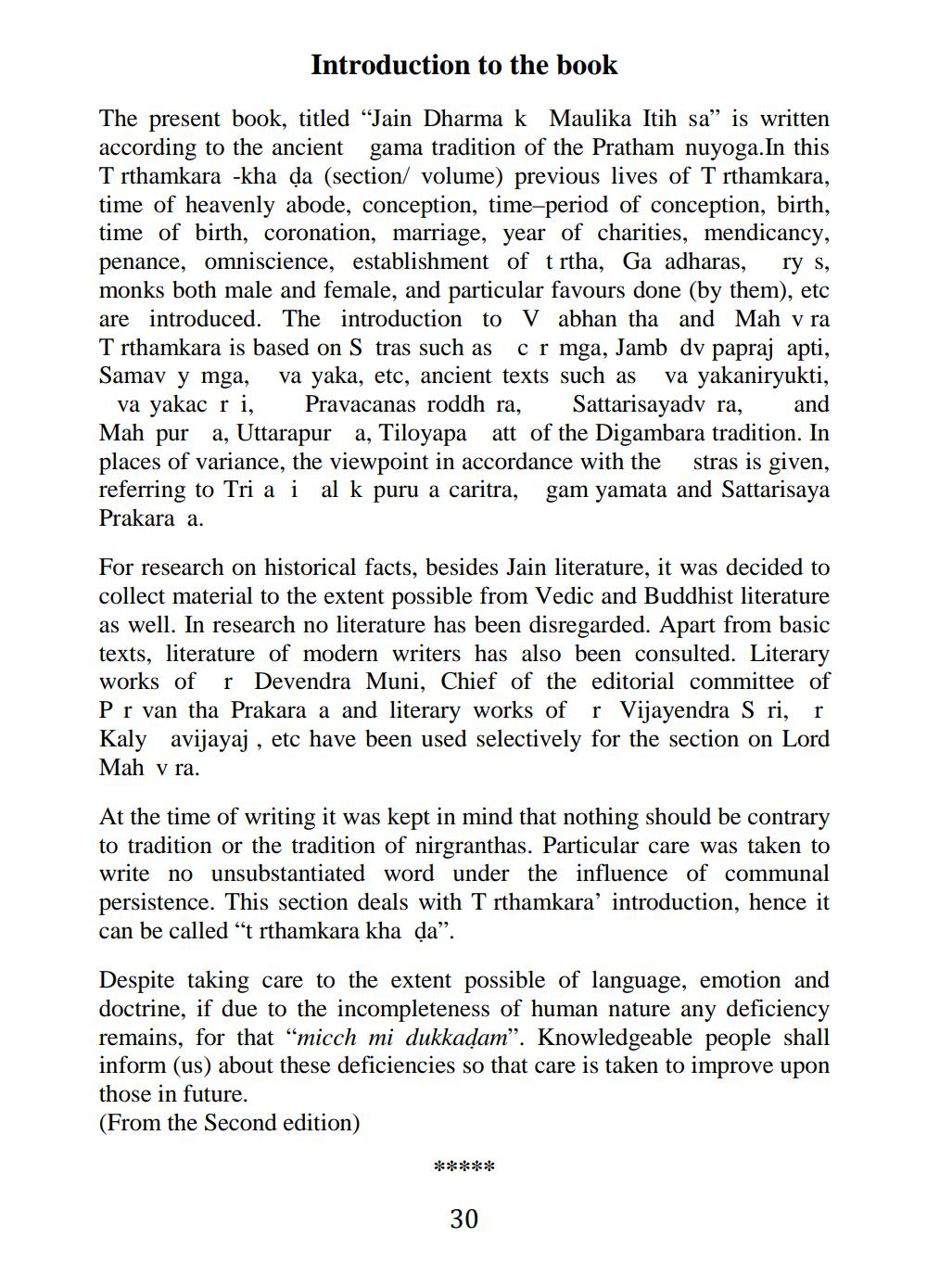________________
Introduction to the book
The present book, titled “Jain Dharma k Maulika Itih sa” is written according to the ancient gama tradition of the Pratham nuyoga.In this T rthamkara -kha da (section/ volume) previous lives of T rthamkara, time of heavenly abode, conception, time-period of conception, birth, time of birth, coronation, marriage, year of charities, mendicancy, penance, omniscience, establishment of t rtha, Ga adharas, rys, monks both male and female, and particular favours done by them), etc are introduced. The introduction to V abhan tha and Mah v ra T rthamkara is based on Stras such as cr mga, Jamb dv papraj apti, Samav y mga, va yaka, etc, ancient texts such as va yakaniryukti,
va yakac ri, Pravacanas roddh ra, Sattarisayady ra, and Mah pura, Uttarapura, Tiloyapa att of the Digambara tradition. In places of variance, the viewpoint in accordance with the stras is given, referring to Tri a i al k puru a caritra, gam yamata and Sattarisaya Prakara a.
For research on historical facts, besides Jain literature, it was decided to collect material to the extent possible from Vedic and Buddhist literature as well. In research no literature has been disregarded. Apart from basic texts, literature of modern writers has also been consulted. Literary works of r Devendra Muni, Chief of the editorial committee of Pr van tha Prakara a and literary works of r Vijayendra S ri, r Kalyavijayaj , etc have been used selectively for the section on Lord Mah v ra.
At the time of writing it was kept in mind that nothing should be contrary to tradition or the tradition of nirgranthas. Particular care was taken to write no unsubstantiated word under the influence of communal persistence. This section deals with Trthamkara' introduction, hence it can be called “t rthamkara kha da”.
Despite taking care to the extent possible of language, emotion and doctrine, if due to the incompleteness of human nature any deficiency remains, for that “micch mi dukkaļam”. Knowledgeable people shall inform (us) about these deficiencies so that care is taken to improve upon those in future. (From the Second edition)
30




